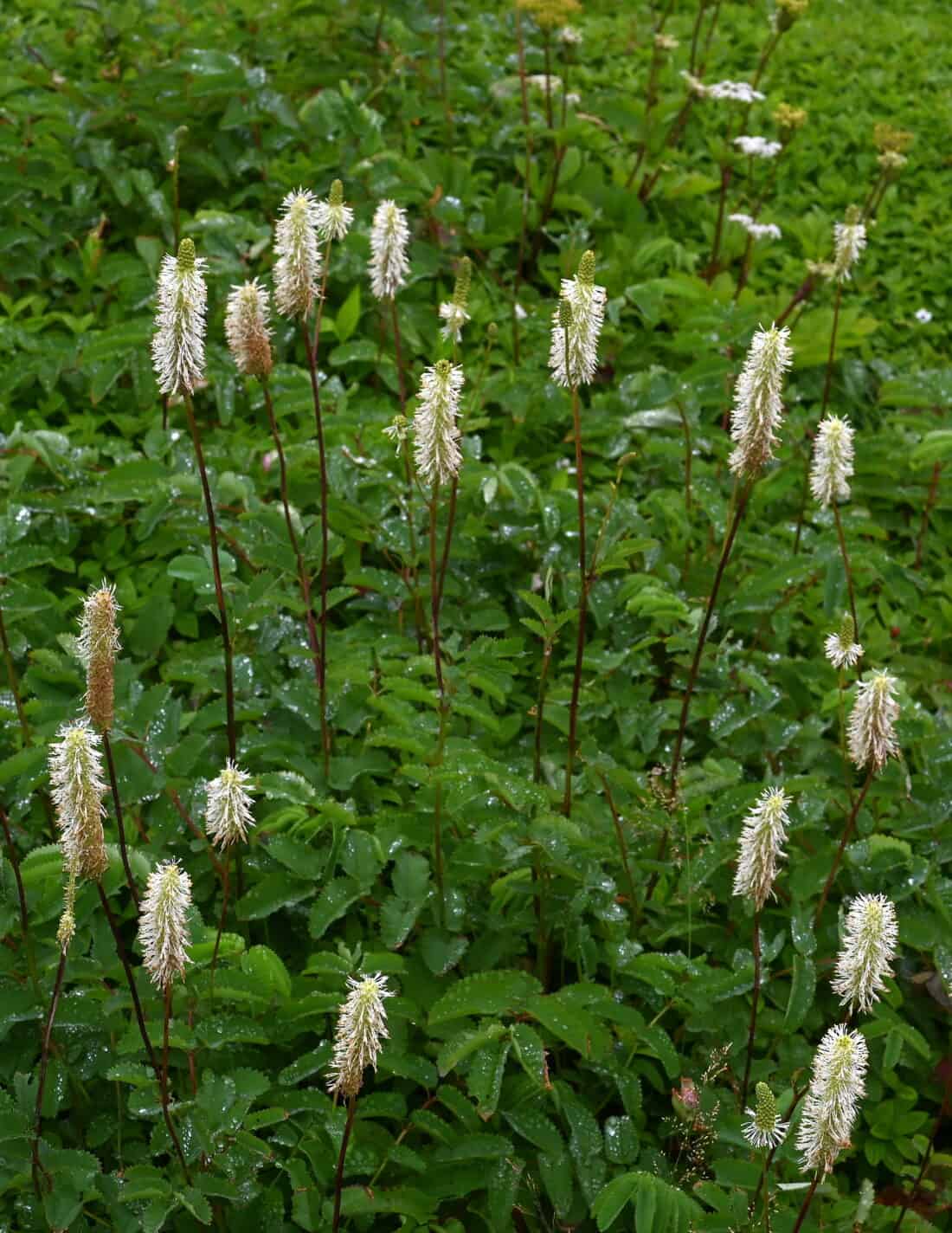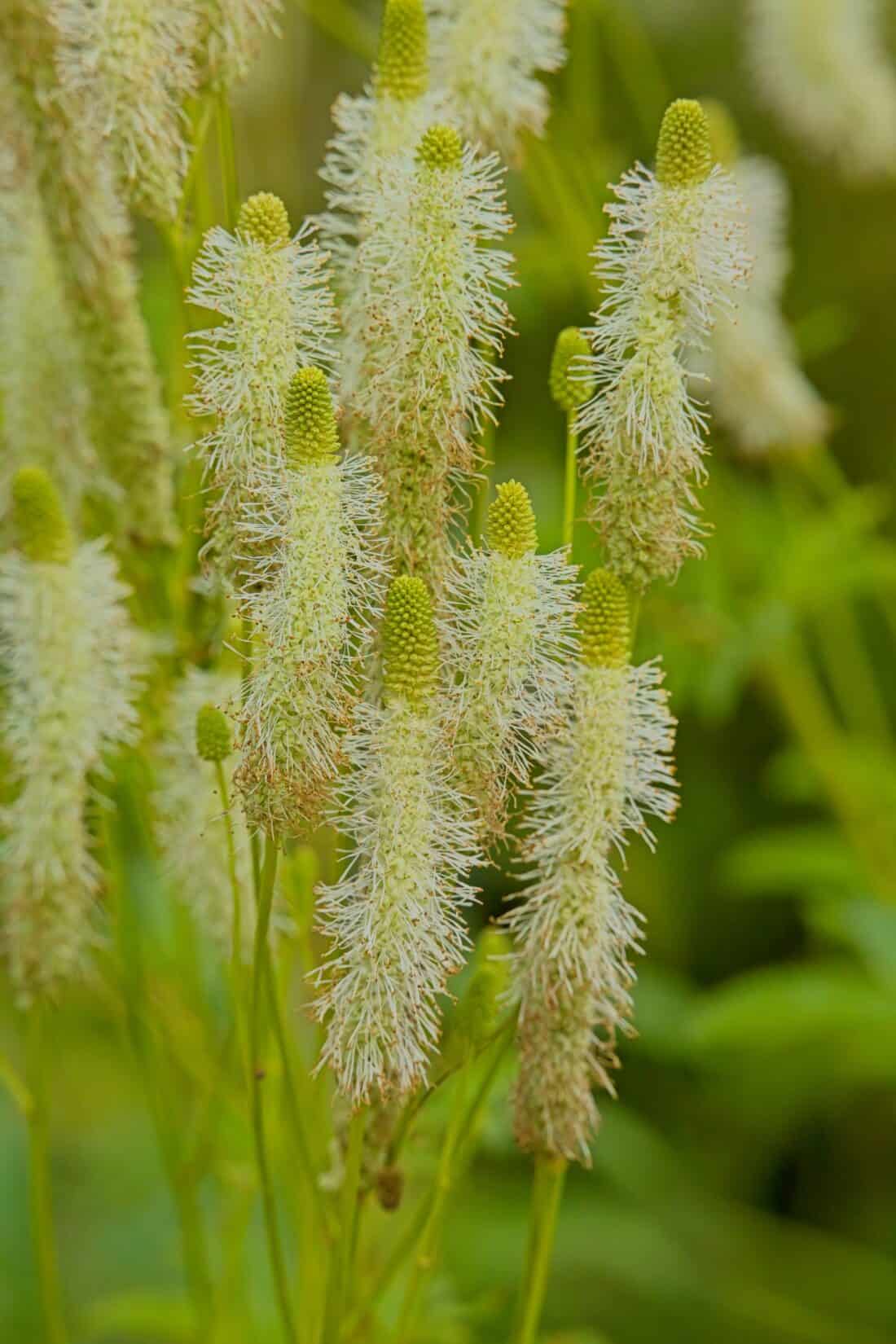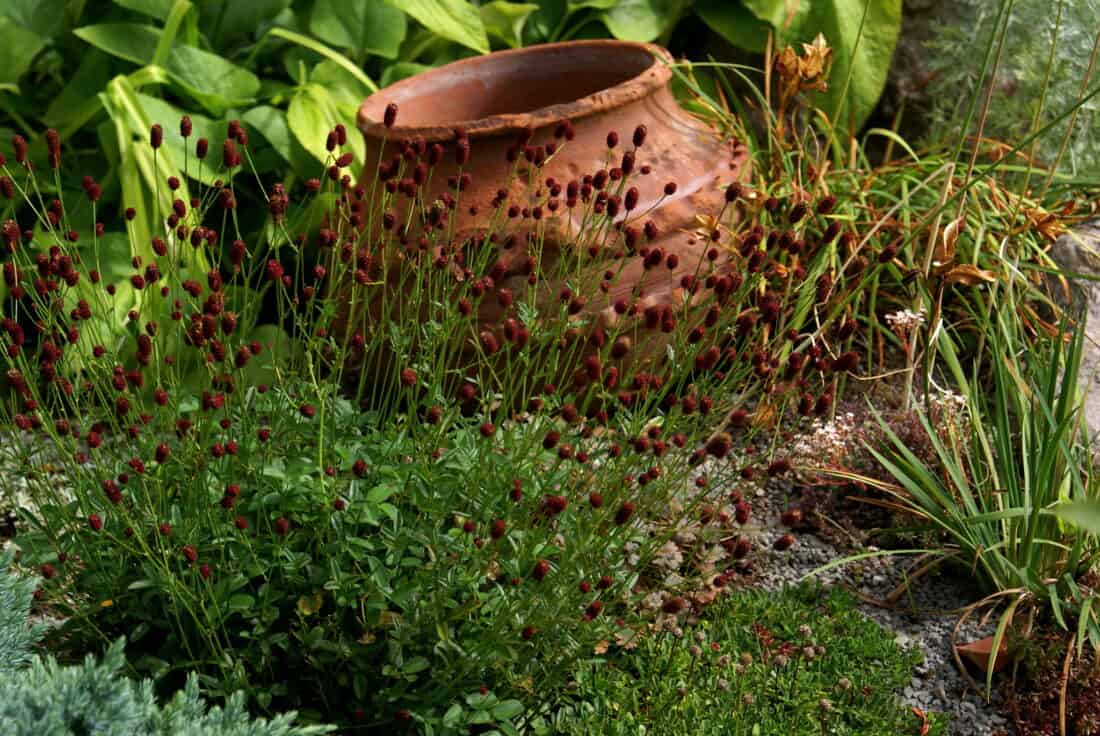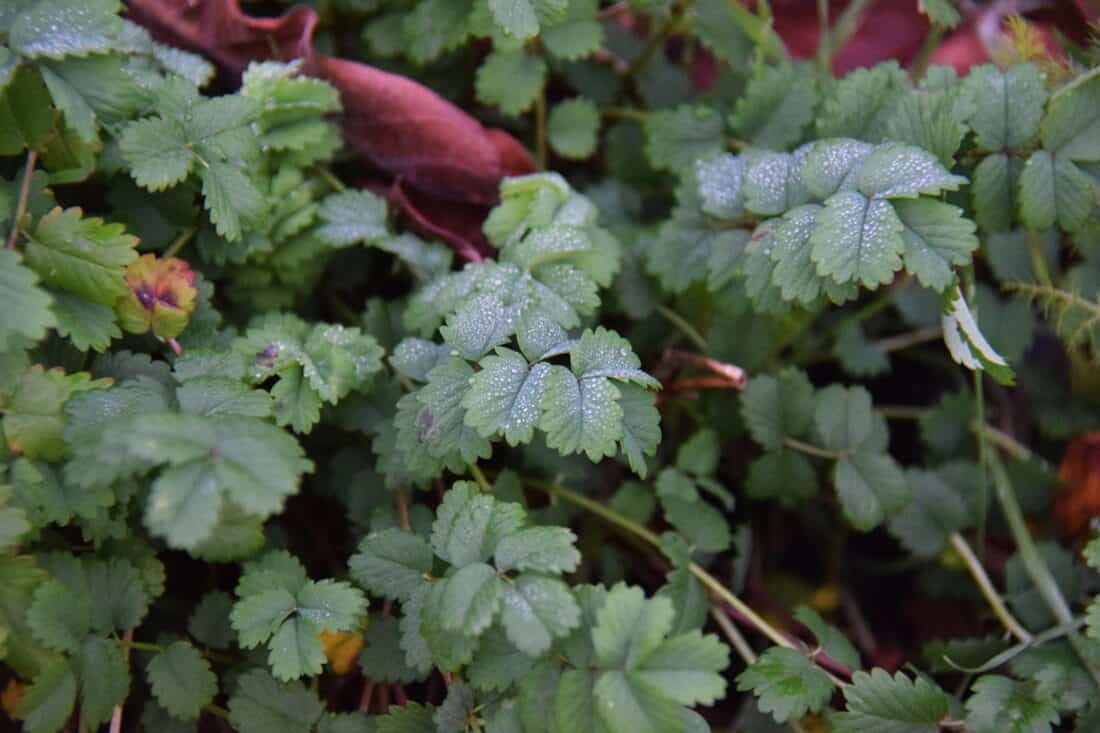I wish I had a pond and a sold wet area around it – so much so that I am considering adding at least one water feature to my garden. My top-of-the-hill location (where water quickly sheds with gravity) means that I don’t have a good habitat for plants that want a wetter, swampy place to live. Sanguisorbas (in general), and specifically, the native sanguisorba canadensis are top on my list of coveted plants to add once the pond exists.

Sanguisorba canadensis on the Coastal Trail at Gros Morne National Park in Newfoundland, Canada. Image by Ron Parsons.
Sanguisorba is native to Maine, Eastern Canada, and Massachusetts, where I live. I expect it to thrive and add a lot to my airy, casual, slightly wild, and naturalistic New England Garden. I love the prolific white flowers, and this combo by James Alexander Sinclair is one of the prettiest I have seen in a while. (Sanguisorba canadensis, Verbena bonariensis and last weeks native Salix exigua)


Canadian burnet not only has beautiful flowers, but pretty foliage that smells like cucumbers (ahhh reminds me of summer). Some varieties of sanguisorba leaves can be added to salads and have a cucumber taste. The Canadian burnet is also edible, but generally requires cooking.
Other Native Sanguisorbas

The whole family of Sanguisorbas has a lot to offer in the garden; I think this one is Sanguisorba menziesii (Available from Digging Dog Nursery), which is native only to Washington State and Alaska and is another beautiful variation of this useful plant.
Sanguisorba officinalis is native to west coast of USA as well as to northern Europe (depending on the variety).


I’ve tried adding this to my garden – but with mixed results. It is reportedly a favorite of deer and bunnies – but that isn’t what did mine in – It just didn’t thrive. I had it in a couple places – one drier and sunnier and another shadier and with more moisture. I think it really would have been better if I could have found a place where it was both moist and sunny. Do you grow this plant? What do you like or dislike about it?




